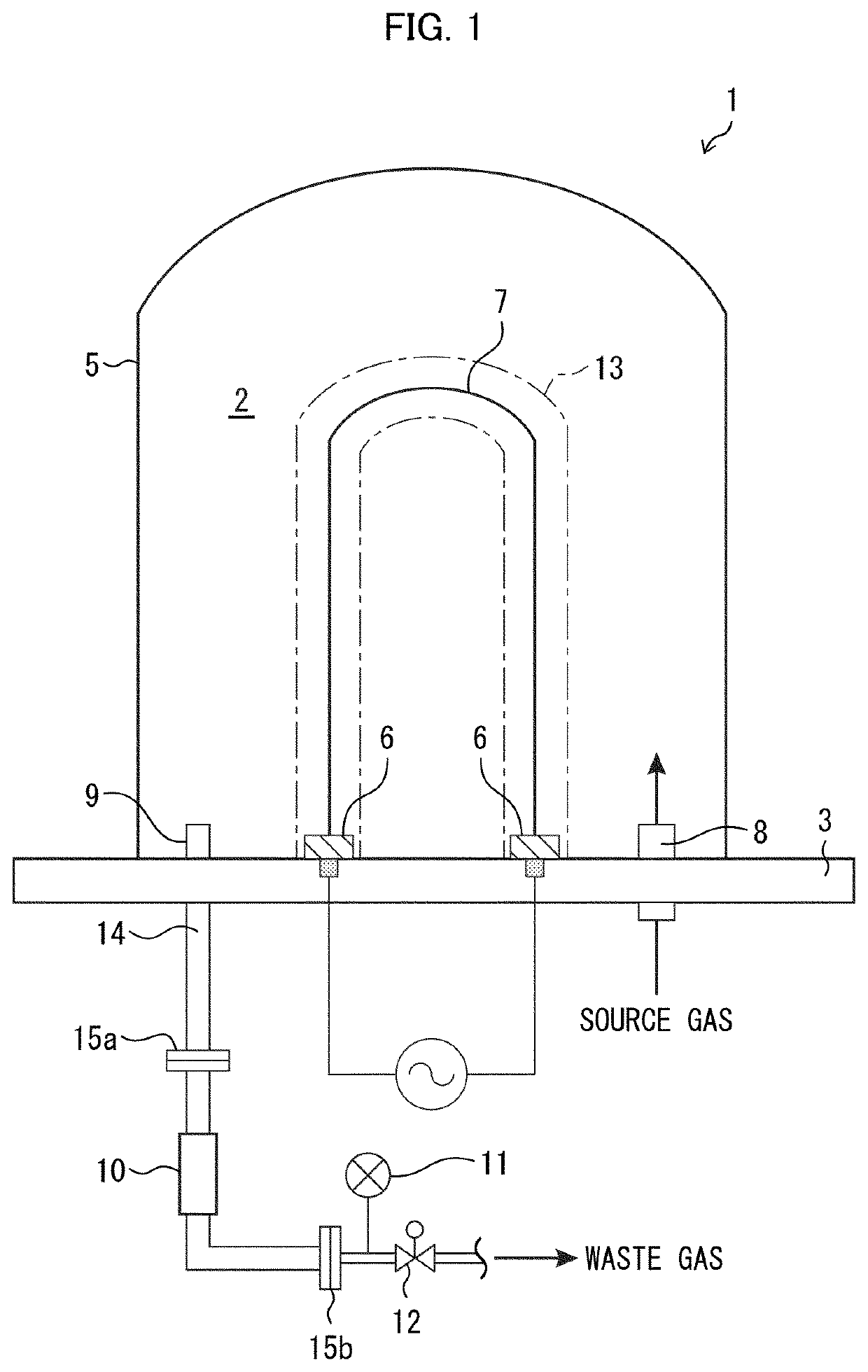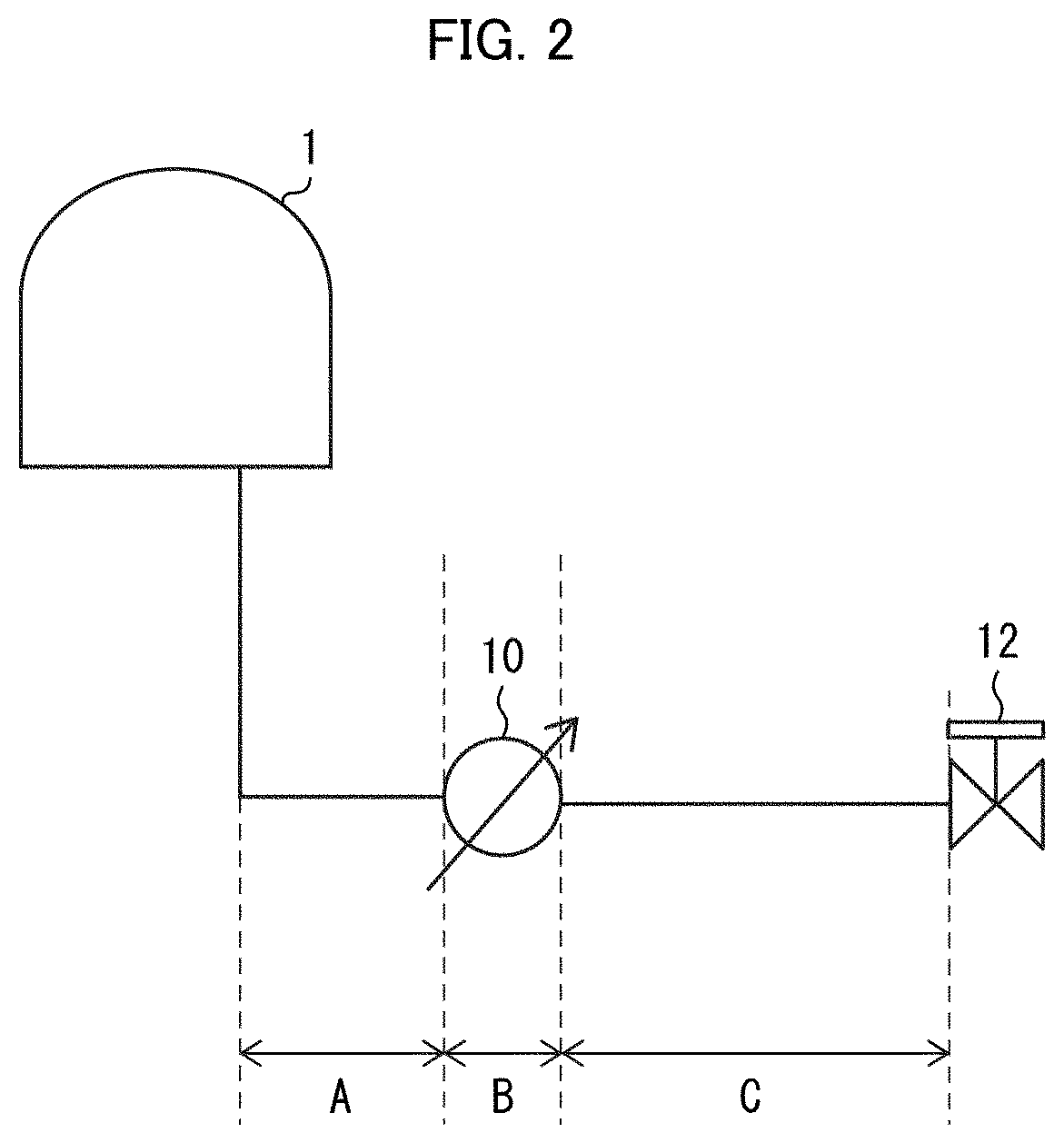Method for producing polysilicon
a technology of polysilicon and polysilicon slurry, which is applied in the direction of silicon compounds, inorganic chemistry, chemistry apparatus and processes, etc., can solve the problems of large production facility itself, deformation or damage, and adverse effects of blocking valves, so as to facilitate maintenance of chemical reactors, prevent thermal degradation of blocking valves, and prevent adhesion effect of silylene polymers
- Summary
- Abstract
- Description
- Claims
- Application Information
AI Technical Summary
Benefits of technology
Problems solved by technology
Method used
Image
Examples
example
[0067]The present invention will be described below in more detail on the basis of an Example. Note, however, that the present invention is not limited to such an Example.
[0068]A bell-jar-shaped chemical reactor having a structure illustrated in FIG. 1 was used. After trichlorosilane and hydrogen were fed into the chemical reactor, electric power was supplied to a silicon filament with an electric current of not more than 2000 A so that a silicon deposition reaction was carried out.
[0069]As a cooler, a U-tube cooler (shell and tube cooler) was used. As a blocking valve, a gate valve made of stainless steel (having a heat-resistant temperature of 500° C.) was used.
[0070]With use of the above device, the silicon filament was heated to approximately 800° C. by supply of electric power to the silicon filament, while a trichlorosilane gas and a hydrogen gas were being fed into the chemical reactor. Polysilicon was thus deposited until the polysilicon had a diameter of 120 mm. In so doing...
PUM
| Property | Measurement | Unit |
|---|---|---|
| temperature | aaaaa | aaaaa |
| temperature | aaaaa | aaaaa |
| temperature | aaaaa | aaaaa |
Abstract
Description
Claims
Application Information
 Login to View More
Login to View More - R&D
- Intellectual Property
- Life Sciences
- Materials
- Tech Scout
- Unparalleled Data Quality
- Higher Quality Content
- 60% Fewer Hallucinations
Browse by: Latest US Patents, China's latest patents, Technical Efficacy Thesaurus, Application Domain, Technology Topic, Popular Technical Reports.
© 2025 PatSnap. All rights reserved.Legal|Privacy policy|Modern Slavery Act Transparency Statement|Sitemap|About US| Contact US: help@patsnap.com


